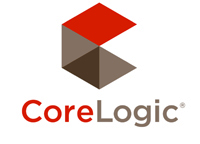 CoreLogic Analysis Shows Credit Risk for New Loans in 2017 Similar to Loans Issued in Early 2000s
CoreLogic Analysis Shows Credit Risk for New Loans in 2017 Similar to Loans Issued in Early 2000s
- Mortgage Loans Exhibit Higher Credit Quality Since the Great Recession
- Purchase-Loan Risk Up Year Over Year Due to High Investor Share
- Refinance-Loan Risk Up Year Over Year Due to Lower Credit Scores and Higher DTI
CoreLogic® (NYSE: CLGX), a leading global property information, analytics and data-enabled solutions provider, today released its Q3 2017 CoreLogic Housing Credit Index (HCI™) which measures trends in six home mortgage credit risk attributes. The HCI indicates the relative increase or decrease in credit risk for new home loan originations compared to prior periods. The six attributes include borrower credit score, debt-to-income ratio (DTI), loan-to-value ratio (LTV), investor-owned status, condo/co-op share and documentation level.
In Q3 2017, the HCI increased to 111.1, up 18 points from 93.1 in Q3 2016. Even with this increase, credit risk in Q3 2017 is still within the benchmark range of the HCI. The benchmark range of 90 to 121 is measured as within one standard deviation of the average HCI value for 2001-2003, considered to be the normal baseline for credit risk. The increase in the credit risk, as measured by the HCI during the past year, was partly due to a shift in the purchase-loan mix to more investor loans and to a shift in the refinance-loan mix to borrowers with lower credit scores and higher DTI. This trend for refinance loans may reflect the rise in the FHA-to-conventional share of refinance activity.
To read the full story click on the link below.
Source: CoreLogic Press Release






















